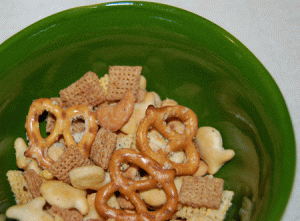Apples have a lot of nutritional value and benefits. They are an excellent source of fiber, a good source of vitamin C, and loaded with antioxidants!
Apples are a great source of fiber. One medium apple with the skin contains 20% of your daily fiber needs. Apples offer both soluble and insoluble fiber. Insoluble fiber helps to promote the movement of materials through your digestive system. Therefore it can help with those who struggle with constipation. Soluble fiber helps to lower blood cholesterol and blood sugar. It specifically lowers the “bad” cholesterol in the blood and helps to slow the absorption of sugar in the blood. Therefore a high fiber diet can help to reduce the risk of developing type II diabetes.
Apples are packed with antioxidants which can help protect your body’s cells from damage. One specific antioxidant apples contain is Quercetin. Quercetin has been shown to fight heart disease, cancer, and even Alzheimer’s disease. The peel of the apple contains the highest amount of antioxidants which is why it is so beneficial to eat apples in their whole fruit form opposed to as applesauce or juice.
Apples are a good source of vitamin C, which is also an antioxidant that helps protect your body’s cells from damage and chronic diseases. Vitamin C is very important for the body to form collagen in bones, cartilage, muscles, and blood vessels. Vitamin C also helps aid the absorption of iron as well. For example if you had a bowl of an iron-enriched cereal and added apples, it could help aid in the absorption of iron.
Apple season is here! Pick your own or buy your apples from your local farmer’s market.
Apple Yogurt
Makes 6 servings
2 medium apples (any color)
¼ cup crunchy granola
¼ cup raisins or dried fruit bits
1 ½ cups (12 ounces) vanilla yogurt
Core the apples. Leave the skin on and cut into small pieces. Mix all ingredients in a bowl. Stir well and put ¼ cup of mixture into six individual serving cups.
Easy Baked Applesauce
Makes 8 Servings
5 tbsp. water
¼ cups packed brown sugar
2 tbsp. fresh lemon juice
1 tsp. ground cinnamon
4 pounds- apples, peeled, cored, and halved
Preheat oven to 375 degrees
Combine all ingredients in a large Dutch oven; toss to coat. Cover and bake at 375 degrees for 1 hour and 15 minutes or until apples are tender, stirring once after 45 minutes.
Recipe from: Cooking Light
 Try this recipe for a snack mix with the tangy twist of ranch dressing. By adding nuts, you are getting protein along with the complex carbohydrates found in the pretzels, fish crackers and cereal. Eating a protein and carbohydrate together will make you feel full longer. Nuts offer a dose of heart healthy fat and by choosing whole grain fish crackers and wheat cereal, you are boosting the fiber content a little which will help you feel fuller faster. This is a great snack for kids to prepare by themselves or with just a little help from an adult.
Try this recipe for a snack mix with the tangy twist of ranch dressing. By adding nuts, you are getting protein along with the complex carbohydrates found in the pretzels, fish crackers and cereal. Eating a protein and carbohydrate together will make you feel full longer. Nuts offer a dose of heart healthy fat and by choosing whole grain fish crackers and wheat cereal, you are boosting the fiber content a little which will help you feel fuller faster. This is a great snack for kids to prepare by themselves or with just a little help from an adult. Vitamin C is required by the body for the growth and repair of tissues in all parts of your body. It is essential for the healing of wounds and the repair and maintenance of cartilage, bones and teeth. Vitamin C is also known to boost our immune systems and keep illness away. Vitamin C is also one of the antioxidants that our body uses to fight off cancer, heart disease and arthritis. Antioxidants, like vitamin C, are very important at helping reduce the damage to our bodies caused by toxic chemicals and pollutants like cigarette smoke.
Vitamin C is required by the body for the growth and repair of tissues in all parts of your body. It is essential for the healing of wounds and the repair and maintenance of cartilage, bones and teeth. Vitamin C is also known to boost our immune systems and keep illness away. Vitamin C is also one of the antioxidants that our body uses to fight off cancer, heart disease and arthritis. Antioxidants, like vitamin C, are very important at helping reduce the damage to our bodies caused by toxic chemicals and pollutants like cigarette smoke.
You must be logged in to post a comment.